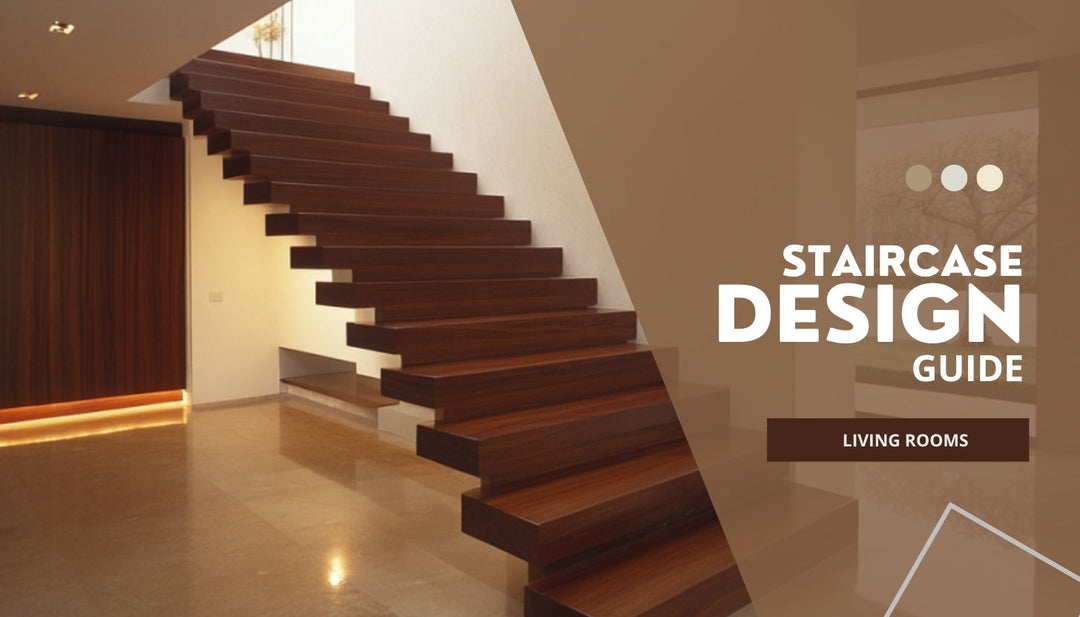Random Rubble Masonry Foundation Design Guide

In the realm of architectural design and construction, the foundation serves as the cornerstone of any structure, ensuring its stability, durability, and longevity. Among various foundation types, the random rubble masonry foundation stands out as a traditional yet eco-friendly option. This comprehensive guide delves into the intricacies of random rubble masonry foundations, exploring their construction process, advantages, and integration into modern home designs.
Key Takeaways:
- Random rubble masonry foundations offer durability, eco-friendliness, and unique aesthetic appeal.
- The construction process requires skilled labour and careful stone placement for optimal strength.
- This foundation type is ideal for areas with abundant local stone and projects aiming for a rustic or traditional look.
- Proper maintenance, including regular inspections and moisture control, is crucial for longevity.
- Random rubble foundations contribute to sustainability through low carbon footprint and use of natural materials.
- While labour-intensive, these foundations can be cost-effective and environmentally friendly in the right contexts.
What is Random Rubble Masonry Foundation?

Random rubble masonry foundation is a time-honored construction technique that utilises irregularly shaped stones set in a bed of mortar. These locally sourced stones are strategically placed to provide structural strength despite their non-uniform shapes. Smaller stones and mortar fill the gaps between larger stones, ensuring the foundation's overall stability.
This foundation style, one of the oldest construction methods, is particularly prevalent in areas rich in natural stone. Despite its rustic appearance, random rubble masonry boasts remarkable durability and load-bearing capacity, making it a popular choice for various building types, especially in rural and hilly regions.
Construction Process of Random Rubble Masonry Foundation

The construction of a random rubble masonry foundation involves several critical steps:
- Excavation: Dig trenches to a depth that ensures the foundation rests on solid ground, typically below the frost line to prevent seasonal movement.
- Preparing the Foundation Bed: Level and compact the ground, sometimes adding a thin concrete layer for stability.
- Laying the Stones: Carefully place stones of varying sizes by hand, with larger stones forming the bulk and smaller ones filling gaps.
- Applying Mortar: Use mortar between stones to bind them together. Lime-based mortars are often preferred for their flexibility and breathability.
- Curing: Allow time for the mortar to harden and the foundation to settle, which can take several days to weeks.
- Backfilling: Fill the space around the foundation with compacted soil for additional support.
Advantages of Random Rubble Masonry Foundation

- Durability and Strength: The interlocking nature of stones provides exceptional strength and weather resistance.
- Eco-Friendly: Utilizes locally sourced, natural materials, reducing environmental impact.
- Cost-Effective: In stone-rich areas, it can be more economical than other foundation types.
- Aesthetic Appeal: Offers a unique, rustic look that can enhance architectural design.
- Thermal Mass: Stone foundations can help regulate indoor temperatures, improving energy efficiency.
Disadvantages of Random Rubble Masonry Foundation

- Labour-Intensive: Requires skilled craftsmen, potentially increasing labour costs and construction time.
- Inconsistent Quality: The irregular nature of stones can lead to variations in foundation quality.
- Limited Availability: May not be economical in regions where suitable stones are scarce.
- Moisture Concerns: Proper waterproofing is crucial to prevent moisture ingress.
Comparative Analysis: Random Rubble vs. Other Foundation Types
|
Feature |
Random Rubble |
Concrete |
Brick |
|
Material Cost |
Low (in stone-rich areas) |
Moderate |
High |
|
Labor Cost |
High |
Moderate |
Moderate |
|
Durability |
High |
High |
High |
|
Aesthetic Appeal |
High (rustic) |
Low |
Moderate |
|
Eco-Friendliness |
High |
Low |
Moderate |
|
Construction Speed |
Slow |
Fast |
Moderate |
|
Load-Bearing Capacity |
Moderate |
High |
High |
|
Moisture Resistance |
Moderate (with proper treatment) |
High |
Moderate |
Best Applications for Random Rubble Masonry Foundation

- Rural or Mountainous Areas: Ideal where stone is abundant and local.
- Traditional or Rustic Architecture: Perfect for designs aiming for a natural, historic feel.
- Low-Rise Buildings: Suitable for single-story homes and small structures.
- Eco-Friendly Projects: Excellent choice for environmentally conscious designs.
- Renovation of Historic Structures: Maintains authenticity in restoration projects.
Design Integration and Tips

- Exposed Foundation: Leave parts of the foundation visible as a design feature.
- Blending with Landscape: Use local stones to create a seamless transition between building and environment.
- Combine with Modern Elements: Contrast rubble masonry with glass or metal for a unique aesthetic.
- Terracing: Utilize random rubble for retaining walls in sloped landscapes.
- Interior Features: Incorporate the stone aesthetic in interior walls or fireplaces for continuity.
Maintenance and Longevity

To ensure the longevity of a random rubble masonry foundation:
- Regular Inspections: Check for signs of moisture, cracks, or shifting annually.
- Repointing: Replace deteriorated mortar every 50-100 years, depending on exposure.
- Drainage Management: Ensure proper grading and guttering to direct water away from the foundation.
- Vegetation Control: Prevent plant roots from compromising the foundation's integrity.
- Sealing: Apply water-repellent sealants to exposed stonework every 5-10 years.
Environmental Impact and Sustainability

Random rubble masonry foundations offer several environmental benefits:
- Low Carbon Footprint: Minimal processing and transportation of materials.
- Natural Materials: Uses stones that can be returned to nature without harm.
- Energy Efficiency: High thermal mass can reduce heating and cooling needs.
- Longevity: Durable construction reduces the need for replacement or extensive repairs.
- Local Sourcing: Supports local economies and reduces transportation emissions.
Frequently Asked Questions (FAQs)

What is random rubble foundation?
A random rubble foundation is a type of construction where irregularly shaped stones are used to build the foundation of a structure. These stones are arranged without any specific pattern and are held together with mortar. This method is often used in areas where natural stones are readily available and is known for its durability and rustic aesthetic.
Is rubble good for foundation?
Yes, rubble can be an excellent choice for foundations, especially in certain circumstances. Random rubble foundations offer several advantages:
- Durability: When properly constructed, they can last for centuries.
- Cost-effectiveness: In areas rich in natural stone, it can be more economical than other materials.
- Sustainability: It uses local, natural materials, reducing environmental impact.
- Aesthetic appeal: Provides a unique, rustic look that's desirable in certain architectural styles.
However, it's important to note that the quality of a rubble foundation depends heavily on the skill of the mason and the properties of the local stone.
What size is random rubble masonry?
Random rubble masonry doesn't adhere to specific size standards, as the whole point is to use stones of varying sizes and shapes. However, typically:
- Larger stones (face stones) may range from 15-30 cm in height and 20-45 cm in length.
- Smaller stones (fillers) can be as small as 5-10 cm in any dimension.
- The thickness of the wall usually ranges from 30-60 cm, depending on the building requirements.
Remember, these are general guidelines, and actual sizes can vary based on local practices and available materials.

What is an RRM wall?
An RRM wall stands for Random Rubble Masonry wall. This type of wall is constructed using irregularly shaped stones of various sizes, arranged without any specific pattern. RRM walls are commonly used in foundation construction, retaining walls, and sometimes in the visible parts of buildings for their aesthetic appeal.
What is the meaning of random rubble?
"Random rubble" refers to a masonry construction technique where stones of irregular shape and size are used without being cut into uniform shapes. The term "random" indicates that the stones are not laid in regular courses, and "rubble" refers to rough, undressed stones. This method creates a rustic, natural appearance and has been used in construction for centuries.
How to calculate RR masonry?
Calculating Random Rubble (RR) masonry typically involves estimating the volume of the structure and the materials needed. Here's a basic approach:
- Calculate the volume of the wall or foundation (length x width x height).
- Estimate that about 60-70% of this volume will be stone, and the rest will be mortar.
- Add about 15-20% to account for wastage and overlapping.
For a more precise calculation, consult with a structural engineer or experienced mason, as factors like stone type, mortar mix, and local building practices can affect the calculations.
What is DR and RR masonry?
DR stands for Dressed Rubble masonry, while RR stands for Random Rubble masonry. The main differences are:
- DR masonry: Stones are roughly squared and dressed (shaped) on the faces, beds, and joints. It results in a more uniform appearance and is generally stronger than RR masonry.
- RR masonry: Uses stones in their natural shape without much dressing. It's more irregular in appearance and typically requires more skill to construct properly.

What is the formula for calculating RR?
While there's no single formula for calculating Random Rubble (RR) masonry, you can use this general guideline:
Volume of RR masonry = L x W x H x 1.2
Where:
- L = Length of the wall
- W = Width (thickness) of the wall
- H = Height of the wall
- 1.2 is a factor to account for mortar and wastage
For material estimation:
- Stone required = 60-70% of total volume
- Mortar required = 30-40% of total volume
What is the full form of RR masonry?
RR masonry stands for Random Rubble masonry. This term describes a construction technique where irregularly shaped stones are used to build walls or foundations without adhering to regular courses or patterns. It's a traditional method that's still popular in many parts of the world, especially in areas with abundant natural stone resources.
Conclusion

Random rubble masonry foundation, with its blend of traditional craftsmanship and eco-friendly attributes, offers a compelling option for modern home design. While it requires skilled labour and may not suit all environments, its durability, aesthetic appeal, and sustainability make it an excellent choice for those seeking to create unique, environmentally-conscious homes. By understanding its strengths and limitations, designers and homeowners can effectively incorporate this time-tested technique into contemporary architecture, creating structures that are both beautiful and resilient.
For those interested in exploring other sustainable construction techniques, consider learning about filler slab design for homes, which offers another eco-friendly approach to building design. Additionally, integrating natural ventilation strategies can further enhance the environmental performance of homes built with random rubble masonry foundations.
When implementing random rubble masonry in your design, it's crucial to adhere to local building codes and regulations to ensure both safety and legal compliance. By combining traditional techniques with modern sustainability practices, architects and homeowners can create homes that are not only structurally sound but also environmentally responsible and aesthetically pleasing.








Leave a comment